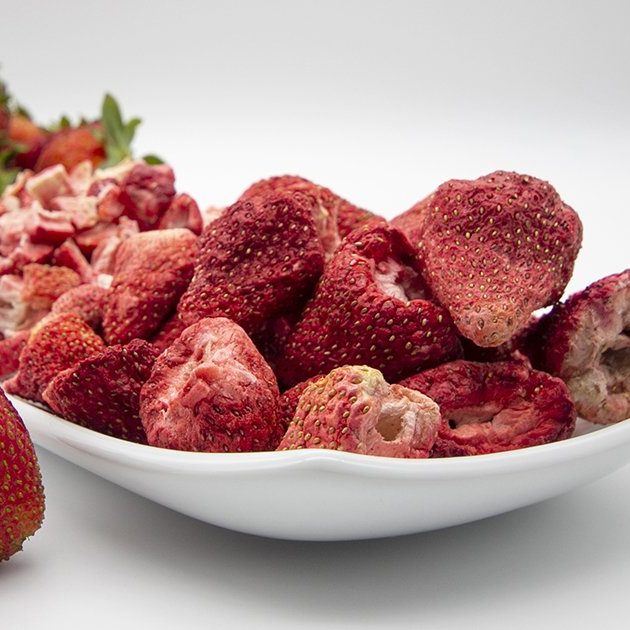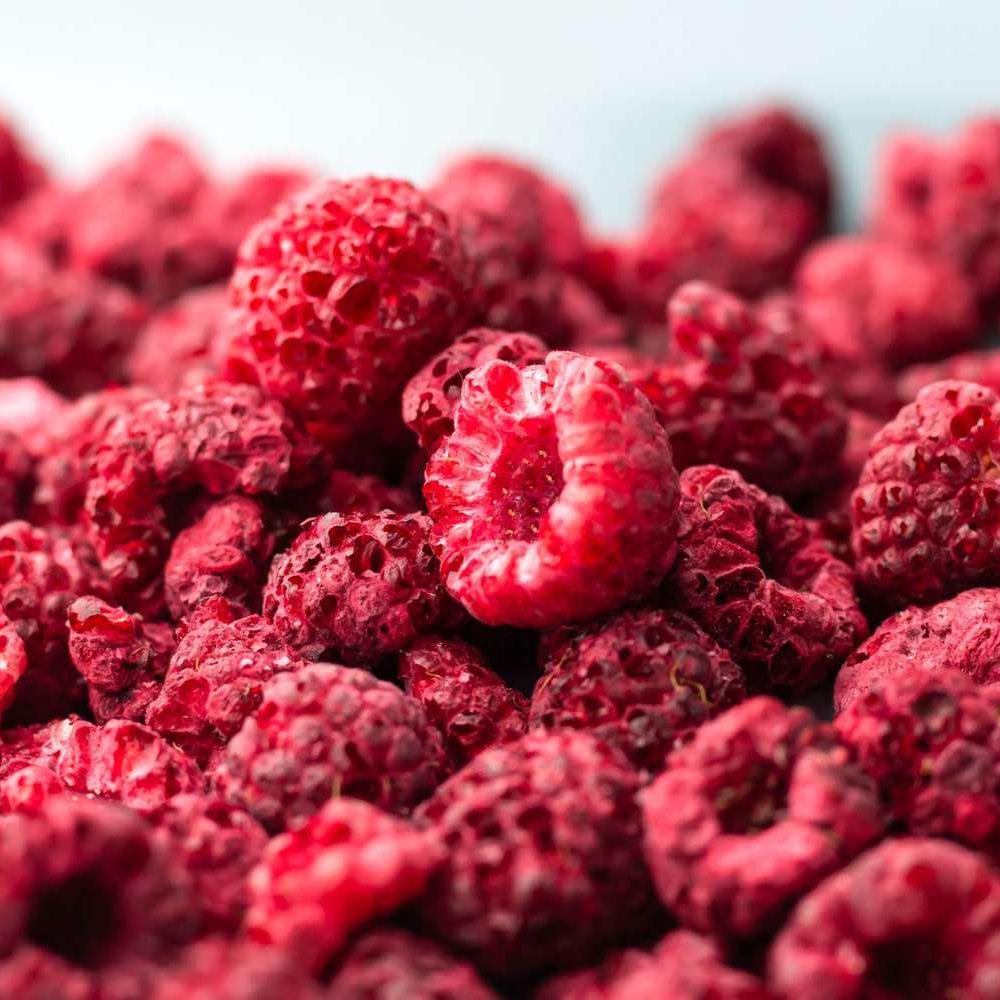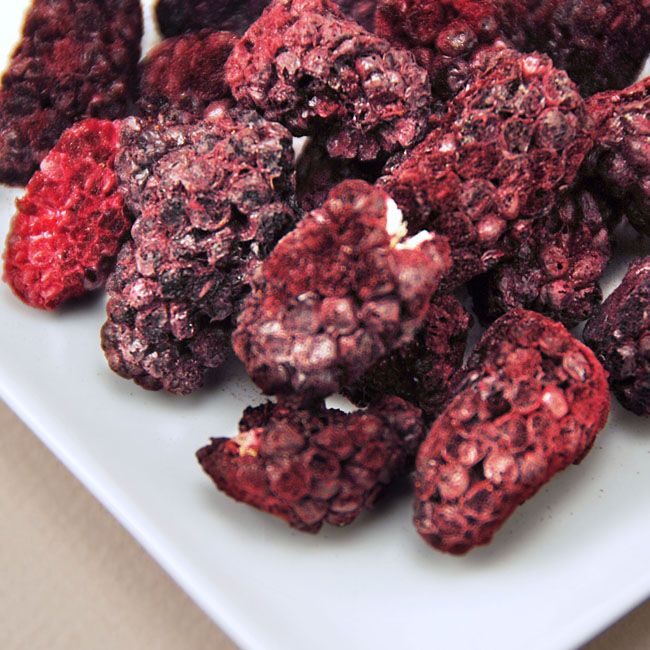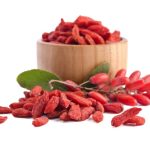Introduction: The Rise of Dried Fruits
Dried fruits have gained immense popularity in recent years, both as snacks and as ingredients in various dishes. Two common methods for drying fruits are freeze-drying and dehydration. While both processes aim to remove moisture, the results can vary significantly in taste, texture, and nutritional content. Understanding these differences can help consumers make informed choices. This article will explore the processes forfreeze dried vs dehydrated fruit, their nutritional benefits, taste and texture profiles, and their common uses.
What is Freeze-Dried Fruit?
The Process of Freeze-Drying
Freeze-drying is a method where fruit is first frozen at extremely low temperatures. Once frozen, it undergoes a process called sublimation. During sublimation, ice converts directly into vapor without becoming liquid. This process effectively removes moisture while preserving the fruit’s structure and nutrients. The result is lightweight, nutrient-rich fruit that retains most of its original flavor.
This method typically takes longer and requires specialized equipment. However, the end product has a long shelf life and can be rehydrated easily for various uses. Understanding this method reveals why freeze-dried fruit is a favorite among backpackers and consumers who prioritize nutrition and convenience.

Nutritional Benefits of Freeze-Dried Fruit
Freeze-dried fruits maintain most of their vitamins and minerals compared to fresh fruits. Because the freeze-drying process preserves nutritional integrity, many people view them as a healthier alternative to candies and other snacks. Nutrients like vitamin C, fiber, and antioxidants remain intact, making them a nutritious option.
Moreover, freeze-dried fruits are often free from additives and preservatives. This characteristic appeals to health-conscious consumers seeking clean-label snacks. With their high nutrient density, freeze-dried fruits can complement a balanced diet effectively.
What is Dehydrated Fruit?
The Dehydration Process
Dehydrated fruit involves drying fruit at lower temperatures, typically using heat. During this process, moisture is removed from the fruit over several hours. The dehydrating method can vary, with some using ovens while others employ specialized food dehydrators. Unlike freeze-drying, dehydration does not freeze the fruit before removal of moisture.
While this method is generally quicker, it can alter the fruit’s original flavor and texture. Dehydration often results in a chewier product, which some individuals may find less appealing. Understanding the dehydration method helps consumers recognize its unique effects on the fruit’s properties.
Nutritional Benefits of Dehydrated Fruit
Dehydrated fruits also retain many nutrients, though some may be lost in the heating process. Vitamins A and C can diminish during dehydration, affecting overall nutritional value. However, the fiber content often remains high, helping with digestion and promoting a feeling of fullness.
Additionally, dehydrated fruits can be found in a wide variety. Popular options include dried apricots, raisins, and apple slices. Many consumers enjoy dehydrated fruits for their unique flavors and textures, even if they may not retain as many nutrients as freeze-dried options.

Taste and Texture Comparisons
Flavor Profiles
When it comes to flavor, freeze-dried fruits tend to retain their original taste better than dehydrated fruits. Freeze-drying preserves the fresh fruit’s sweetness and acidity, making them more flavorful. The process maintains the essence of the fruit, resulting in a delightful snacking experience.
In contrast, dehydrated fruits may have a more concentrated flavor due to the moisture reduction. However, the heating process can alter their taste slightly, sometimes leading to a more caramelized or cooked flavor. Consumers may prefer one over the other based on personal taste preferences.
Texture Differences
Texture is another crucial aspect where these two methods diverge. Freeze-dried fruits have a light and crisp texture. They can be quite brittle and airy, making them easy to eat as a snack. This unique texture can also add an interesting element to dishes like cereals or salads.
Dehydrated fruits generally have a chewy or leathery texture, resembling candies more than fresh fruit. While some people enjoy the chewy bite, others may find it less appealing. The texture of the fruit can significantly influence how people incorporate it into their diets.
Common Uses of Freeze-Dried and Dehydrated Fruits
Culinary Applications
Both freeze-dried and dehydrated fruits serve various culinary purposes. Freeze-dried fruits are popular in smoothies, yogurt, and trail mixes. Their lightweight nature makes them an excellent option for travel or outdoor activities. Many chefs also use freeze-dried fruits in gourmet dishes for added texture and flavor.
Dehydrated fruits find their place in baked goods, granola bars, and snacks. Because their chewy texture works well in recipes, they are often incorporated into cookie mixes and bars. Knowing the various uses of each type can inspire new culinary creations.
Snack Options
Both freeze-dried and dehydrated fruits are convenient snack options. Freeze-dried fruits can be eaten straight from the package or rehydrated in water. Their light texture makes them easy to transport, while their intense flavor makes them a satisfying treat.
Dehydrated fruits, often found in grocery stores, are typically enjoyed as on-the-go snacks. Their chewiness and sweetness make them a popular choice for families and health-conscious individuals alike. Having a variety of snack options provides consumers with choices based on their preferences.

Storage and Shelf Life
Storage of Freeze-Dried Fruits
One significant advantage of freeze-dried fruits is their long shelf life. When stored in a cool, dry place in airtight containers, freeze-dried fruits can last for years. This longevity makes them suitable for emergency food supplies, camping trips, or any situation where long-lasting snacks are desired.
Many brands package freeze-dried fruits in vacuum-sealed pouches to increase shelf life. Once the package is opened, keeping the remaining fruit in an airtight container is advisable to preserve freshness. Understanding proper storage methods can maximize the benefits of freeze-dried fruits.
Storage of Dehydrated Fruits
Dehydrated fruits also have a reasonably long shelf life, but not as extensive as freeze-dried fruits. When kept in airtight containers and away from moisture, dehydrated fruits can remain fresh for several months to a year. Proper storage is essential to prevent spoilage and maintain flavor.
It’s vital to check for signs of moisture or mold in dehydrated fruits, as these factors can reduce shelf life. While they may not last as long as freeze-dried options, proper storage can still ensure a satisfying snack for months.
Choosing Between Freeze-Dried and Dehydrated Fruits
Factors to Consider
When deciding whether to choose freeze-dried or dehydrated fruits, several factors come into play. Personal taste preferences, intended use, and nutritional needs are key considerations. If you prioritize flavor and nutrition, freeze-dried fruits might be the better option.
If you appreciate a chewy texture in your snacks, dehydrated fruits could be favorable. Additionally, budget considerations may influence your choice. Freeze-dried fruits are often more expensive due to their production process, while dehydrated options tend to be more affordable.
Dietary Needs and Lifestyle
Individuals with specific dietary needs may also want to consider their options carefully. For those focusing on maximizing nutritional intake, freeze-dried fruits may align better with their goals. In contrast, dehydrated fruits can serve as a lower-cost, satisfying snack without compromising significantly on nutrition.
Ultimately, examining your lifestyle, preferences, and goals can guide you in choosing the right type of dried fruit. With both options available, there’s something to suit every palate and dietary requirement.
Conclusion: Making Informed Choices
In conclusion, both freeze-dried and dehydrated fruits offer unique benefits and characteristics. Understanding the differences between the two methods can help consumers make informed choices that align with their taste preferences and nutritional needs. Whether you prioritize long shelf life, flavor, or texture, there are options available to suit every individual.
As more people seek convenient and healthy snacking alternatives, dried fruits will continue to play an essential role in our diets. By exploring both freeze-dried and dehydrated fruits, you can enjoy a variety of flavors and benefits. Embrace the diversity of these fruits and incorporate them into your meals and snacks for a healthier lifestyle.


